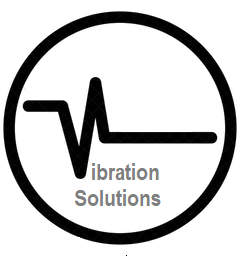
Experimental Modal Analysis
Want to conduct classical modal analysis using impact hammer or shaker?
.
.
VibraSolv Software/ EMA Application
A powerful and versatile tool equipped with comprehensive HELP.
14 days trial.
Experimental Modal Analysis (EMA)
Experimental Modal Analysis (EMA) is a technique used to determine the dynamic characteristics of a structure or system by measuring its response to external excitation. It involves conducting physical tests on the structure or system and analyzing the acquired data to extract modal parameters such as natural frequencies, mode shapes, and damping ratios.
The process typically involves applying controlled forces or vibrations to the structure, measuring the corresponding response using sensors (such as accelerometers or strain gauges), and then processing the data to identify the modal properties. These modal properties provide valuable insights into the dynamic behavior and structural integrity of the system.
EMA is commonly used in various fields, including structural engineering, mechanical systems, aerospace, automotive, and civil engineering. The results obtained from EMA can be used for various purposes, such as structural design optimization, condition monitoring, vibration control, and troubleshooting.
Fundamentals and Challenges of Modal Analysis Methods
The fundamental of modal analysis methods is using measured frequency response function data and curving fitting the data on a predefined mathematical model of the structure. This model assumes the number of DoFs of the structure, its damping type and possibly the number of vibration modes within the measured frequency range.
These assumptions should dictate the mathematical expression of each FRF curve from measurement. As a result, the subsequent work will be a curve-fitting process trying to derive all modal parameters in a mathematical formula of an FRF using measurement data.
The accuracy of modal analysis is not a simple question of how a measured FRF curve is best fitted in a pure mathematical sense. Obviously, the more accurate the measured FRF data are, the better chance we have to get more accurate curve fitting. In mathematics, the accuracy or success of a curve-fitting endeavor can usually be appraised by defining an error function and aiming to minimize it. This approach is only valid if the correct mathematical formula is used in the curve fitting. If, however, an incorrect mathematical model is used, the curve-fitting outcome is doomed to be a bad one if not a failure, even if the error function is actually minimized numerically.
Classification and Overview of Modal Analysis Methods:
Single FRF vs. Multi FRF, SDOF vs. MDOF Approaches”
The modal analysis methods are divided into two categories:
1- using one frequency response function. (Single FRF)
2- using many frequency response functions simultaneously. (Multi FRF)
Another classification is in terms of single degree of freedom(SDOF) and multiple degrees of freedom (MDOF) methods. In the SDOF method, the system is considered to have one degree of freedom within small frequency ranges. In the MDOF method, the system is considered to have multiple degrees of freedom, so a wider range of frequency may be considered at one run.
